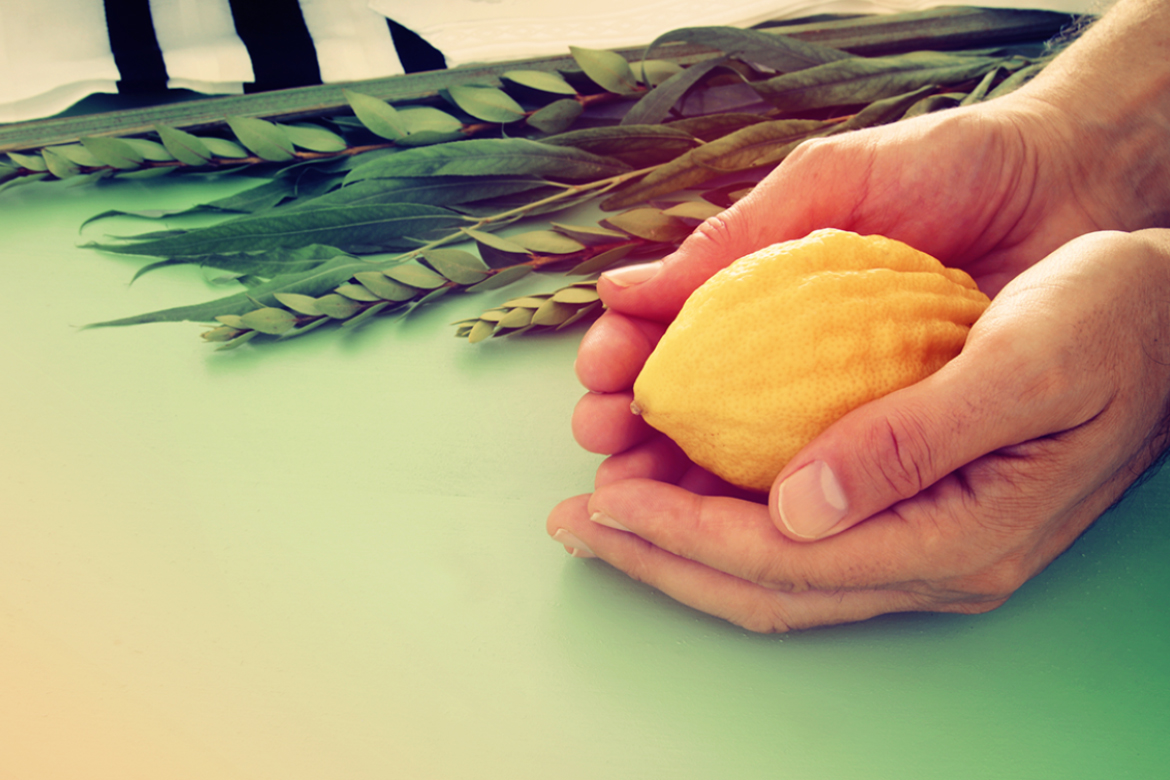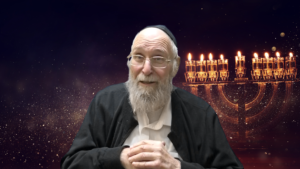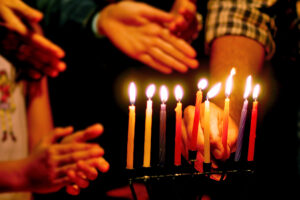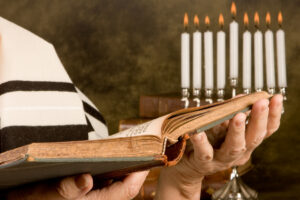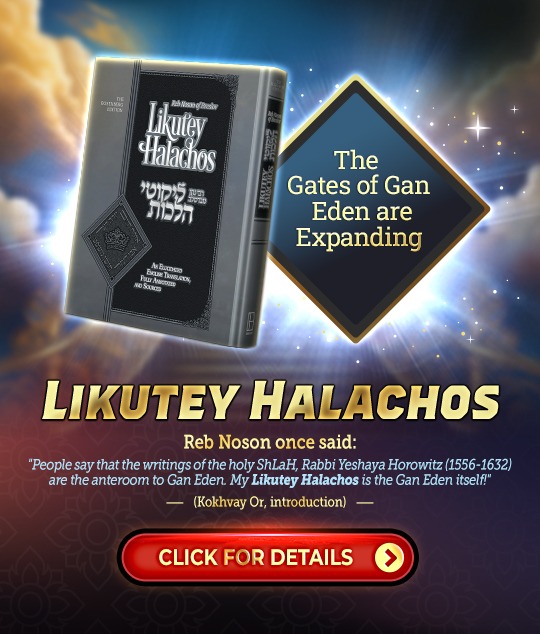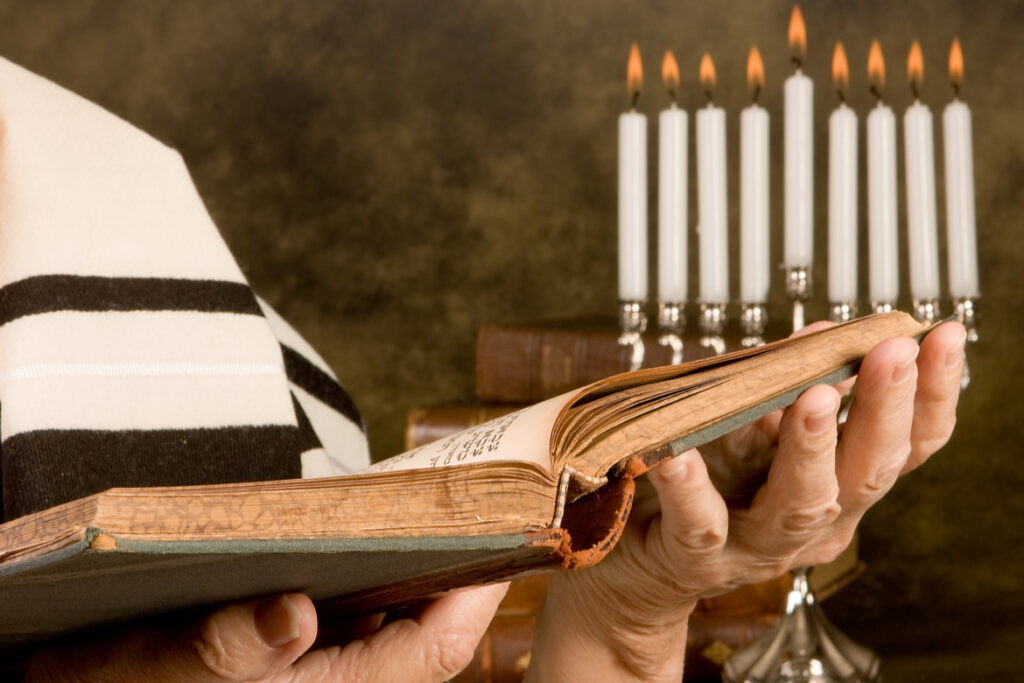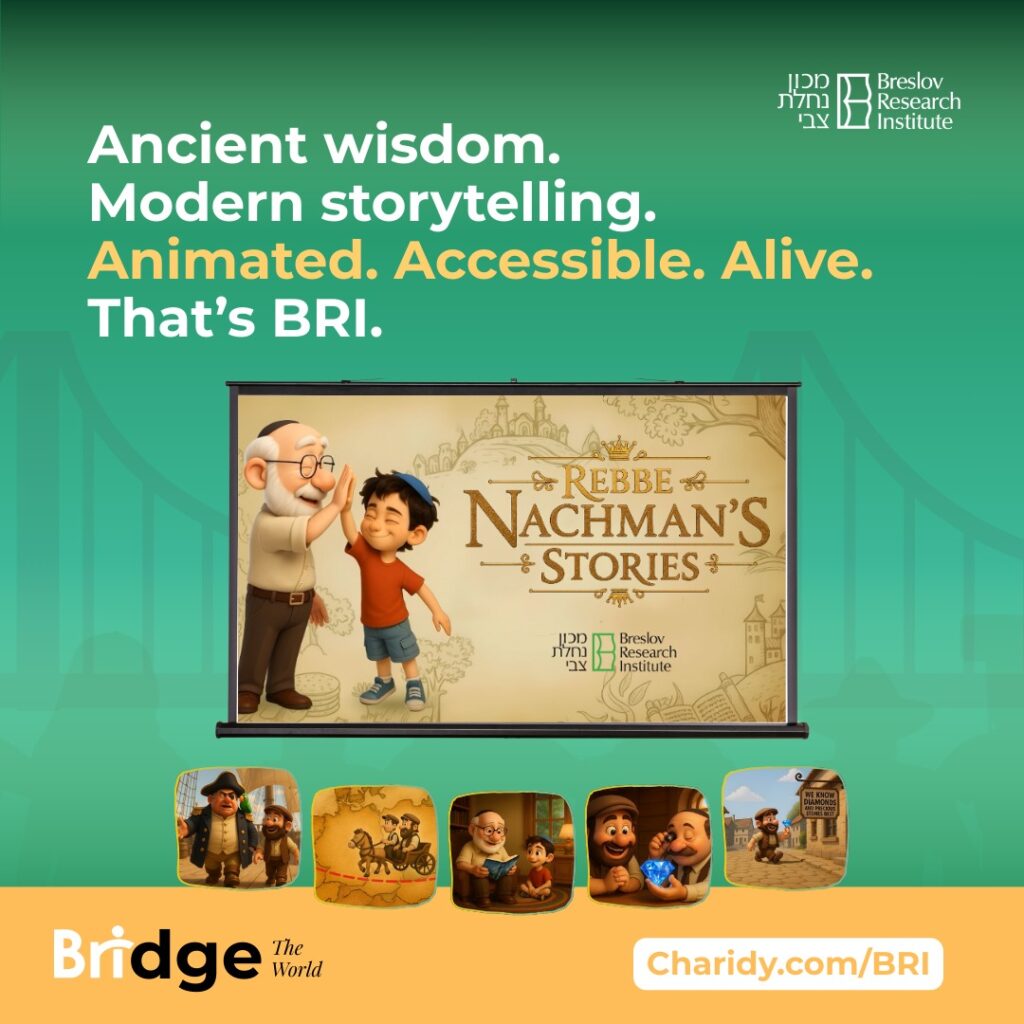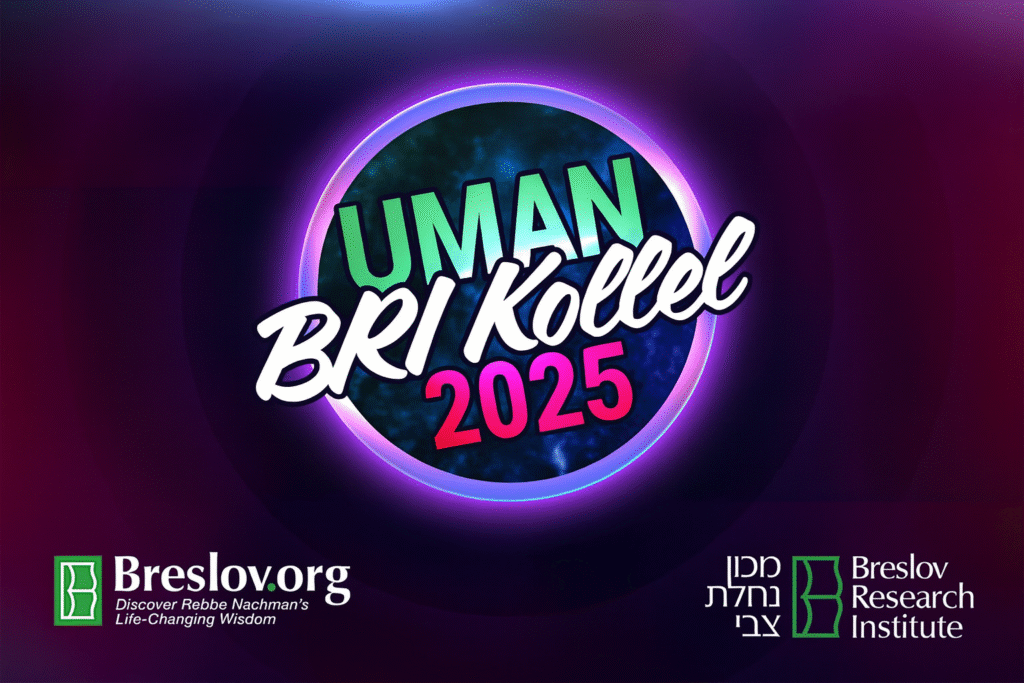- Faith ⬦ Jewish Holidays ⬦ Joy ⬦ Read
A Beautiful Etrog on Yom Kippur!
What makes a person cry on Yom Kippur? And what does one gain by the weeping on Yom Kippur? This is the topic of our discussion concerning both Yom Kippur and Sukkot.
The Zohar in the “Sefer HaTikkunim” explains the verse: “She opened it and saw the na’ar (child or youth). And Behold! The child was crying, and she had pity on him” (Exodus 2:6), as relating to the Yamim HaNora’im (The High Holy Days), Rosh HaShana and Yom Kippur. When the Nation of Israel is the “child [who] was crying” on the Yamim HaNora’im, immediately it arouses “pity on him,” meaning that G-d has mercy on us and grants us a good year. From this we learn that the Nation of Israel during the Yamim HaNora’im is considered to be a “crying child.” What is the connection between the crying and being a youth?
To this end, we will bring an amazing excerpt from one of Rabbi Nachman’s conversations:
“According to the effort we put into our prayers on Yamim HaNora’im are we worthy to have a beautiful etrog. In as much as a person merits to cry on the Yamim HaNora’im, so will he merit a beautiful etrog.” Rabbi Nachman explains there is a commonly used expression that “every youth has a beautiful wife.” On the Yamim HaNora’im the Nation of Israel is the aspect of “a youth,” as it is written in the “Sefer HaTikkunim”: “And behold, a child was crying” and then immediately it says, “and she had pity on him” (Exodus 2:6, Tikkunim, Tikkun 11, page 26). The more that a person cries during the Yamim HaNora’im, the more he enters the category of “a child crying” and through this he merits to “a beautiful etrog.” The Zohar compares the splendor and hidur (beautification, being on a higher level) of the mitzvah of “etrog,” which means choosing an etrog without any blemishes, to the “beautiful woman” who has no downside to her beauty, as the verse says: “You are all fair, my beloved, and there is no blemish in you” (Song of Songs 4:7).
The idea behind the saying that “every youth has a beautiful wife” is explained by Rabbi Nachman thus: “The understanding and intellect that a person has comes from the brain. The brain receives its vitality by drawing from the moisture and fattiness present in the body, the blood (cardiovascular system), and the skeleton, which includes the food that a person eats that is broken down in his body. Therefore, whoever is a youth, means that his brain is still concentrated in his bones (marrow) and not completely formed. That is, the process of maturation of the brain that draws from the basic moisture and the fattiness from the body has not yet been fully completed, and thus his mind has not yet reached the full stage of development.
To continue, this same youth, whose brain has not yet fully developed and whose brain essence is still concentrated in his bones, is drawn to his soul mate whose source is in the rib (a bone) as it is written: “And He took one of his ribs” (Genesis 2:21). Thus, she is beautiful, because most of a person’s beauty and enlightenment comes from the mind, as it is written: “A man’s wisdom enlightens his face” (Ecclesiastes 8:1). Since his mind is still concentrated in his bone marrow, this means that his beauty is found in his bones, such as the woman who originated from his rib, which is one of his bones. Now Rabbi Nachman sums up the explanation: Similarly is this found in our connection to holiness as in the teaching regarding the etrog. The meaning is that the roots of knowledge are drawn down to the etrog. (See there the kavanot concerning the secret of the etrog and lulav.)
The simple explanation is that the “etrog” hints at the lowest Sefirah (Divine Emanation) of Malchut (Kingship) of the ten Sefirot. All the influence of the nine Sefirot above it flows into the Sefirah of Malchut. The intention of the shaking of the lulav and the etrog is to draw down the mochin (mind, brain) into the lower Sefirot. In order to do this, one must enlighten from the roots of the mind, from the roots of the Chassadim which are in the Sefirah of Da’at (Knowledge) to the mochin which is in the six “ketzavot” (the six Sefirot in between them). And thus, they will directly influence the etrog which symbolizes the lower Sefirah, which is Malchut. This is the simple explanation of the deep intentions of the Arizal (the kabbalist, Rabbi Yitzhak Luria) regarding the shaking of the four species on Sukkot (Sichot HaRan 87).
A man’s wisdom enlightens his face” (Ecclesiastes 8:1). Since his mind is still concentrated in his bone marrow, this means that his beauty is found in his bones, such as the woman who originated from his rib…
There is one more point that it is important to make, after which we will connect these ideas to Yom Kippur. Our most important goal is to always try to discard the chochmot (superficial wisdoms) and to behave with simplicity. In the simplest sense, the idea is to discard the external, unnecessary forms of wisdom and to act simply, according to the Torah. However, Rabbi Nachman teaches that this alone is not enough; a person is required at all times to discard the chochmot and to behave in a simple manner, even when he has reached a high level of Torah knowledge. Whenever he reaches a new level, he must check himself carefully to make sure that he that he does not disconnect it from his heart. On the contrary, he must bind all the wisdom he attains directly to his heart. This is what is meant by discarding the chochmot and behaving with simplicity: to bind all chochma (detached wisdoms, which are disconnected from one’s actions) to simplicity (simple acts and behavior).
This is the meaning of the words of Chazal, “Study is not the most important thing, but rather action” (Pirkei Avot 1:17). That is, in every wisdom, in every explanation, and in every attainment a person must go through the processes of checking himself to determine where he stands relative to using this knowledge in simplicity and in his actions, increasing his good deeds as opposed to his wisdom. This is also hinted at in what Chazal said: “Anyone whose deeds exceed his wisdom, his wisdom will endure; but anyone whose wisdom exceeds his deeds, his wisdom will not endure” (Pirkei Avot 3:9) because it all depends on one’s actions and not on one’s wisdom. On the contrary, only when a person’s actions are greater than his wisdom does he have the power to maintain his wisdom and give it existence and purpose; otherwise, there is no purpose and achievement in wisdom (Likutei Moharan II, 5:15, according to Rabbi Natan’s explanation).

Our most important goal is to always try to discard the chochmot (superficial wisdoms) and to behave with simplicity!
Now we can understand what is happening on Yom Kippur:
All our service on Rosh Hashanah and Yom Kippur is to draw down from the mind to the heart, the Da’at (knowledge) to the heart, to see how much we are really connected to ourselves and not just stam learning chochmot. Specifically, on the Yamim HaNora’im, we examine ourselves closely as to where we are holding concerning our knowledge and how much we are using it for its true purpose. After all, we all know that “the whole earth is filled with His glory,” that G-d rules and His Glory fills the whole world. Are our deeds really up to par in this area? In other words, do our deeds match our level of knowledge?
When we reveal that, to our great sorrow, we are very far from this goal, our heart is aroused to a flood of tears, because even from the little knowledge that we do have, we are far away, and how much more so are we far from the lofty knowledge we should have achieved. When this crying is unleashed, we feel like that “youth” who has not yet attained maturity, and then our brain becomes concentrated in our bones. In our context, this is done deliberately. We draw down our mind, the roots of the chassadim which are in Da’at, to the mochin of the six middle Sefirot, and from there straight to the lowest Sefirah of Malchut. This is exactly what we are aiming to rectify on Yom Kippur—the Sefirah of Malchut. When our we behave properly, the Kingdom of G-d is revealed in the world, as is well known the Sefirah of Malchut corresponds to the Olam HaAsiyah (World of Action), as is explained in the Zohar, that the Sefirah of Malchut is contained within the World of Action. And then, we merit to be worthy of a beautiful etrog for Sukkot.
May it be G-d’s Will that we merit to teshuva sheleima (complete repentance) and forgiveness for all our sins on Yom Kippur, and may we fix the Sefirah of Malchut and reveal His Kingship over ourselves and the whole world, and merit to a beautiful etrog and a happy Sukkot and a happy New Year!
(According to Likutei Halachot, Yom Kippur 2)
- 0 comment

